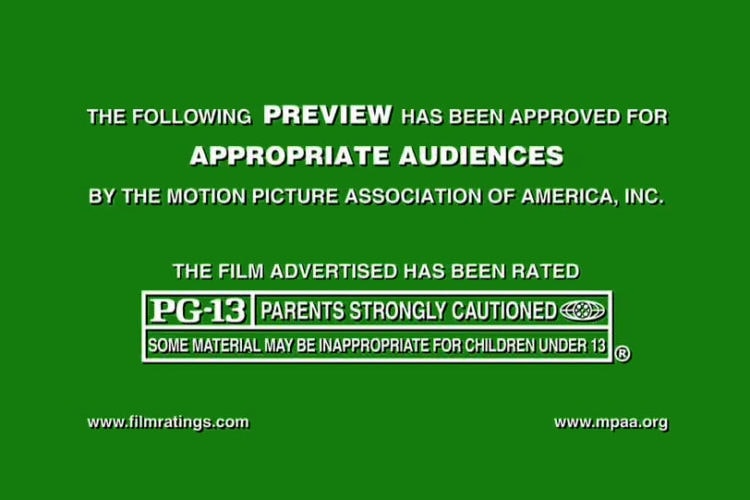From Spider-Man to Avengers: Endgame, and Fast & Furious to Dune, kids are flocking to streaming media (and even theaters) to see rated PG-13 movies.
So the question becomes: Is it against the law for a child aged 10 or 11 or 12 to see movies that are rated PG-13 — or even rated R?
PG-13 movies: Rating revelations
Although there’s a bit of occasional confusion about pretty much all the film ratings — well, except for G, meaning “General audiences” (that is, everyone) — it seems to be PG-13 that provokes the most head-scratching among parents of curious movie-goers.
Originally adopted July 1, 1984, the PG-13 rating was established as a direct result of controversy over Indiana Jones and the Temple of Doom and Gremlins both being released with PG ratings (“Parental guidance suggested”), despite graphic violence that made them slightly less than kid-friendly — but not explicit enough to warrant an R rating.
Steven Spielberg, who directed the Indiana Jones movies and produced Gremlins, suggested to then-president of the Motion Picture Association of America (MPAA) Jack Valenti that a rating between PG and R was necessary.
Valenti agreed, and on August 10, 1984, Red Dawn became the first movie in history to receive a PG-13 rating. Essentially, it says that kids less than 13 years old should not see PG-13 movies, unless they are with a parent or guardian. (See an up-to-date list of PG-13 movies here.)
A look at the ratings
As of 2019, the MPAA currently employs 5 ratings, the rules of which are described briefly as follows:
- G — General audiences. All ages admitted.
- PG — Parental guidance suggested. Some material may not be suitable for children.
- PG-13 — Parents strongly cautioned. Some material may be inappropriate for children under 13.
- R — Restricted. Children under 17 require accompanying parent or adult guardian.
- NC-17 — No one 17 and under admitted.
The MPAA has a more detailed explanation of what each rating entails, and why a film may receive that rating on their website, and we do encourage you to check it out if you’re not familiar with what makes a film a certain rating.
Illegal for kids to see PG-13 movies? The answer is…
Put simply, no. There’s nothing illegal about bringing a 10-year-old to PG-13 movies — because that’s exactly what the “PG” in the rating means: Parental Guidance.
You, as a parent (or grandparent, or guardian) are allowed to determine if your child is mature enough to handle the subject matter of a given film.
This is how the MPAA describes movies that should have the PG-13 rating:
A PG-13 rating is a sterner warning by the Rating Board to parents to determine whether their children under age 13 should view the motion picture, as some material might not be suited for them.
A PG-13 motion picture may go beyond the PG rating in theme, violence, nudity, sensuality, language, adult activities or other elements, but does not reach the restricted R category.
The theme of the motion picture by itself will not result in a rating greater than PG-13, although depictions of activities related to a mature theme may result in a restricted rating for the motion picture. Any drug use will initially require at least a PG-13 rating.
More than brief nudity will require at least a PG-13 rating, but such nudity in a PG-13 rated motion picture generally will not be sexually oriented.
There may be depictions of violence in a PG-13 movie, but generally not both realistic and extreme or persistent violence.
A motion picture’s single use of one of the harsher sexually-derived words, though only as an expletive, initially requires at least a PG-13 rating. More than one such expletive requires an R rating, as must even one of those words used in a sexual context.
The Rating Board nevertheless may rate such a motion picture PG-13 if, based on a special vote by a two-thirds majority, the Raters feel that most American parents would believe that a PG-13 rating is appropriate because of the context or manner in which the words are used or because the use of those words in the motion picture is inconspicuous.
From the Classification and Rating Rules (Revised July 2020; Paragraph breaks added)
Is it legal for kids to see rated R or NC-17 movies?
Similarly, it’s not illegal for kids under 17 to sneak into an R movie without a parent, nor is it illegal for them to do the same with an NC-17 movie. If caught, a theater will kick them out, certainly, but no law has been broken.
Essentially, although theaters are under a moral obligation to uphold the rating restrictions, they are under no legal obligation to do so. (And, of course, in this era where so many movies can be accessed on demand, what your kids watch — or don’t — is completely at your discretion.
As such, film ratings aren’t like tobacco and alcohol age requirements — they are guidelines and restrictions enforced by businesses, not by the law.
We went to the Classification and Rating Administration for an answer to the question of whether or not the rating system is a law. They specifically say it’s voluntary.
The goal of the Classification and Rating Administration (CARA), the voluntary film rating system administered by the MPAA, is to provide parents with credible and consistent information about the level of content in movies to help them determine what is appropriate for their children.
None of the ratings indicate whether a film is good, bad, or otherwise, nor is it CARA’s purpose to prescribe social policy.
This system has withstood the test of time because, as American parents’ sensitivities change, so too does the rating system. Elements such as violence, language, drug use, and sexuality are continually re-evaluated through surveys and focus groups to mirror contemporary concern and to better assist parents in making the right family viewing choices.
For more information, visit the FilmRatings.com site and read the whole FAQ, as well as the rating rules they follow.

PG-13 movies: The rating system is not universal
Keep in mind that this rating system and the rules and guidelines pertaining to it only apply to the United States. Other countries have their own rating systems and guidelines — for instance, the United Kingdom has the British Board of Film Classification (BBFC) — and may see things differently, or apply their own unique perspectives when rating films.
To make things even more interesting, Canada lets each province maintain its own legislation regarding film ratings — so it’s entirely possible that a film in Ontario has a different rating than the same film in British Columbia.
Adding to the fun, Quebec uses a different rating system than the rest of the country. So if you plan on bringing the kids to visit our neighbors to the north and hope to catch a flick, check out the Canadian Media Smarts site, which describes the various rating criteria.











